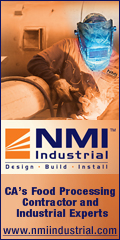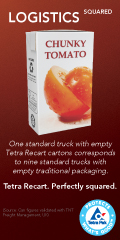
| Archives/Subscribe | www.clfp.com | Contact Us | August 7, 2012 |
CARB Leakage Study on Food Processing Industry Still in Works
In the last meeting of the California Air Resources Board (CARB) in 2010, CARB adopted in a resolution its intention to fund a leakage study of the food processing and agricultural production industries in order to determine the ability of the industry to pass on the increased costs of compliance with AB 32. The resolution item was the result of months of negotiations between the food processing industry (CLFP and Ag Council) over the medium leakage risk designation assigned food processors. Per AB 32, "Leakage" means a reduction in emissions of greenhouse gases (GHG) within the state that is offset by an increase in emissions of greenhouse gases outside the state. Leakage occurs when production is transferred to jurisdictions without a GHG emissions cap. Industry leakage risk is determined by CARB based upon a formula identifying emissions intensity and trade exposure. Leakage risk categories are high, medium, and low. Under the current formula, the food processor industry is designated a medium leakage risk. As a medium leakage risk in the cap-and-trade system, food processors will receive 100 percent of their free allowances in the first compliance period (2012-2013), but only 75 percent in the second compliance period (2015-2017), and 50 percent in the third (2018-2020). In terms of leakage, CARB has treated food processors as one industry, seeing no distinctions between annual operations and seasonal food processing. Most glaringly, in classifying industries for purposes of determining leakage, CARB has lumped the entire food processing industry together assigning only a three-digit designation under the North American Industry Classification System (NAICS). Almost every other industry received either a four or six digit designation. Repeatedly, both in testimony before CARB and in negotiations with staff, CLFP have challenged this finding vigorously, pointing out that there are significant differences between the various types of food processing operations in California, beginning with the most obvious – seasonal vs. annual. CLFP remains concerned that rolling them all together under a leakage study will likely yield results that won’t be accurate or meaningful. As such, we continue to urge CARB to treat each subsector separately. Following the adoption of the resolution, it took CARB months to develop the terms of reference for the food processing leakage study. CLFP actively engaged in this effort including the development of the Request For Proposal (RFP), recommendations as to research candidates, and the parameters of the study. CLFP’s position was, and remains, straightforward: that the study not be too broad, that any researchers considered have a background or familiarity with the food processing and agriculture, and that each subsector be treated separately. Since the RFP was finalized and issued to prospective candidates a common theme has been noted among the candidates that have responded. The researchers have expressed some reservations about the scope of work and availability of the necessary data. CLFP and CARB are currently negotiating these details. Some of the issues that need to be addressed include the amount and type of data required for the study. CARB wants to cast a wide net with regard to data collection, including detailed cost of production data and other information. Many of our members have expressed reservations regarding CARB’s data wish list given the level of detailed information. Other concerns include assurances protecting the confidentiality of such sensitive information as well as the relevancy of the data requested in determining leakage potentials. CLFP has pointed out to CARB staff that we will need to resolve these issues to ensure the cooperation and full participation of food processors. There is a danger in that if only a few companies participate in the leakage study due to these concerns, the chance for inaccurate results may increase significantly. Other questions remain as well, such as how will the quantitative results be interpreted since the researchers will be using a different methodology than CARB used in its initial analysis. How will CARB act on these results? This concern arises as a result of food processors’ past experience with CARB in attempting to develop an energy-based benchmark. In that case, despite two years of effort, and the hiring of a thermodynamics expert, CARB chose to ignore the findings and retain the arbitrary efficiency standard of 85%. CLFP is working to ensure that food processors don’t suffer the same experience; that we again participate in a study only to have CARB leave processors in the same leakage category despite findings to the contrary. CLFP continues to work with CARB to understand the full scope and potential implications of the research. However, we must be cautious as it is not clear at this point that a leakage study would resolve the leakage risk problem for food processors. CLFP will continue focusing on ensuring that if there is a study that it is done correctly, that our member’s sensitive business information is protected, and that the results are accurately interpreted. |
|
| CALIFORNIA LEAGUE OF FOOD PROCESSORS 2485 Natomas Park Dr., Suite 550 Sacramento, CA 95833 Phone: (916) 640-8150 Fax: (916) 640-8156 www.clfp.com |
 |



